
 |
|---|
 |
|---|
General relativity is built from the equivalence principle:
An oberver in an accelerating rocket and zero gravity experiences the same laws of physics as a stationary observer in Earth gravity.
The gravitational redshift of photons can be derived using the equivalence principle.
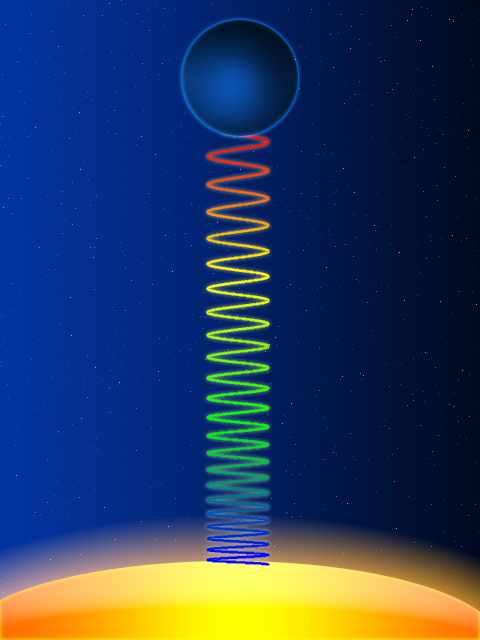 |
|---|
If a photon travels upward by a height H it loses energy to gravity.
h = Planck constant = 6.62e-34 Joule seconds F = Frequency of a photon emitted at height zero f = Frequency of a photon received at height H E = Energy of the photon when it is emitted = h F H = Height that the photon gains between being emitted and received g = Gravitational acceleration C = Speed of lightWe assume that the relative change in frequency is small
F-f << FChange in photon energy = Change in gravitational energy
h (F - f) = g H E/C^2
F-f = g H E / (h C^2)
= g H F / C^2
The fractional change in frequency (redshift) is
(F-f) / F = g H / C^2The redshift can equivalently be interpreted as a slowdown of time at height 0 compared to height H. The farther down you are in a gravitational potential the slower time passes. This is "gravitational time dilation". The fractional change in the clock rate is g H / C^2.
dF = Change in frequency of the photon
= F-f
dF/F = Fractional change in frequency
T = Time for one oscillation of a photon at height 0
t = Time for one oscillation of a photon at height H
dT = Change in period
= T-t
dT/T = Fractional change in period
F = 1/T
dT/T = -dF/F
= -g H / C^2
This formula is an approximation that is valid in weak gravity. For strong gravity such as near
a black hole the full formula is given below.
 |
|---|
Objects in a gravitational well experience time more slowly than objects in flat space.
M = Mass of gravitating object G = Gravity constant R = Distance from the gravitating object g = Gravitational acceleration = G M / R^2 C = Speed of light Rs = Schwarzschild radius for the gravitating object = Radius of the event horizon = 2 G M / C^2 T = Time for one oscillation of a photon as a function of R t = Time for one oscillation of a photon at R = Infinity dR = Change in distance from the gravitating object = H (The height from the above calculation)The time dilation factor is
T = t = tIf the photon is far from the gravitating object and if the change is R is small then this formula reduces to the approximation given above.
T = t
~ t (1 + G M / (R C^2))
dT ~ G M t dR / (R^2 C^2)
dT/T = G M dR / (R^2 C^2) For small redshifts we approximate T~t so that dT/T ~ dT/t.
= g H dR / C^2
= g H / C^2
If you are far from a black hole but not at infinity then the time delay factor is
d = 1 - (1-Rs/R)^(1/2)
~ .5 Rs / R
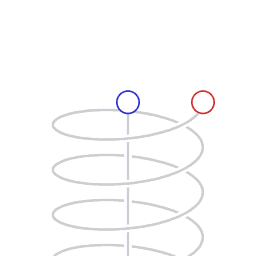 |
|---|
Special relativity covers objects that are moving at high speed in flat space (zero gravity). General relativity covers gravity. Both special relativity and general relativity contribute a time dilation and the total time dilation is the sum of both.
V = Velocity of the object C = Speed of light Z = Lorentz factor for time dilation =
 |
|---|
Suppose there is a stationary observer on the Earth and an observer in orbit at 500 km and moving at 8 km/s. The stationary observer find that the orbiting clock is slower due to its speed (special relativity) and faster due to being at a higher gravitational potential (general relativity). The two effects add accoring to the figures below.
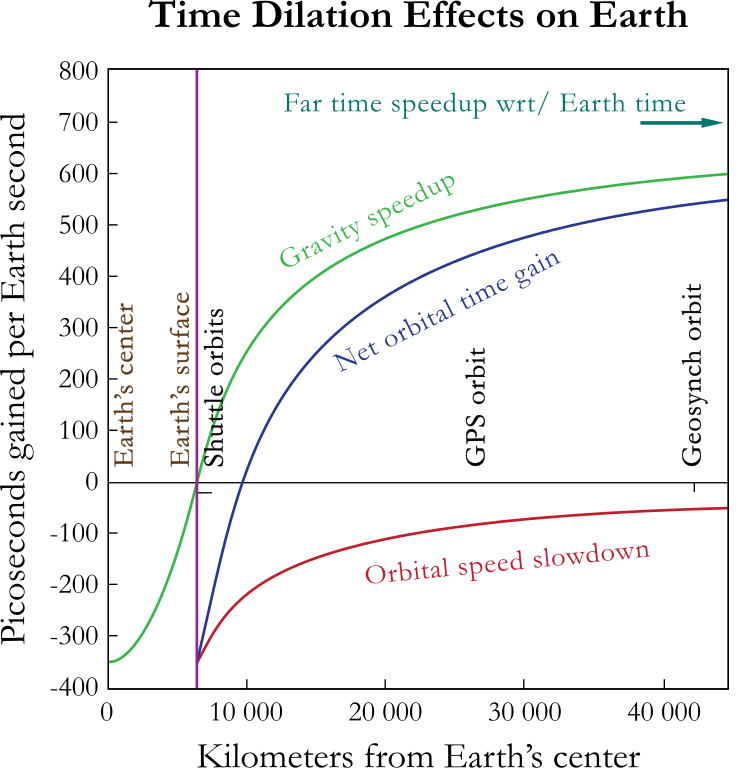 |
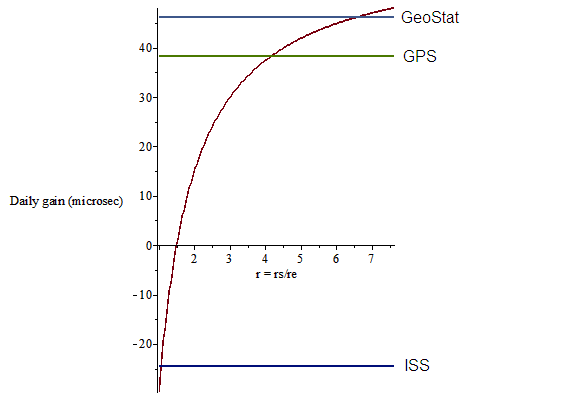 |
|---|---|
1859 Mercury's orbit is found to deviate from Newtonian gravity
1905 Theory of special relativity developed
1915 Theory of general relativity developed
1915 Schwarzschild solves the metric for a point mass and find that
general relativity implies an event horizon (black hole)
1919 Eddington measures the deflection of starlight during a solar eclipse
and confirms the prediction of general relativity
1922 Friedmann finds a solution in which the universe may expand or contract.
Einstein adds a cosmological constant to general relativity.
1927 Lemaitre showed that static solutions of the Einstein equations,
which are possible in the presence of the cosmological constant,
are unstable, and therefore the static universe envisioned by Einstein
could not exist (it must either expand or contract)
1929 Hubble finds that the universe is expanding
1963 Kerr solves the metric for a spinning black hole
1966 Shapiro measures the gravitational time delay of photons
1974 Hulse and Taylor analyze a double pulsar and confirm that it emits
gravitational waves consistent with general relativity
1958 Mossbauer effect discovered, allowing for high-precision measurements of
photon energy
1959 Pound and Rebka use the Mossbauer effect to measure the gravitational redshift
2007 The Gravity Probe B satellite detects frame-dragging and the geodetic effect
In the film "Interstellar" the astronauts experience extreme gravitational time dilation. This is likely accompanied by extreme tidal forces.
If we assume that the source of warping of space is a black hole then
G = Gravitational constant M = Mass of the black hole C = Speed of light Rs = Radius of the event horizon of a black hole (Schwarzschild radius) = 2 G M / C^2 D = Gravitational time dilation factor = = 1 for R -> Infinity = 0 at the black hole event horizon A = Gravitational acceleration = - G M / R^2 Z = Gradient of the acceleration = dA/dR = - 2 G M / R^3 = - Rs C^2 / R^3Suppose we consider D=.5 to be onset of extreme time dilation. D=.5 corresponds to R = (4/3) Rs. In other words you need to be quite close to the black hole. The time dilation experienced in the film was even more extreme than this.
Suppose we consider Z=1 to be the largest tidal force that can be endured over a sustained period of time. If
Z=1 at R = (4/3) Rsthen the mass of the black hole is
Z = (27/256) C^6 / (G M)^2 M = (27/256)^(1/2) C^3 / G / Z^(1/2) ~ .3 C^3 / G / Z^(1/2) ~ 1.2e35 kg ~ 60000 solar massesTo experience extreme time dilation while not getting spaghettified you need a large black hole.
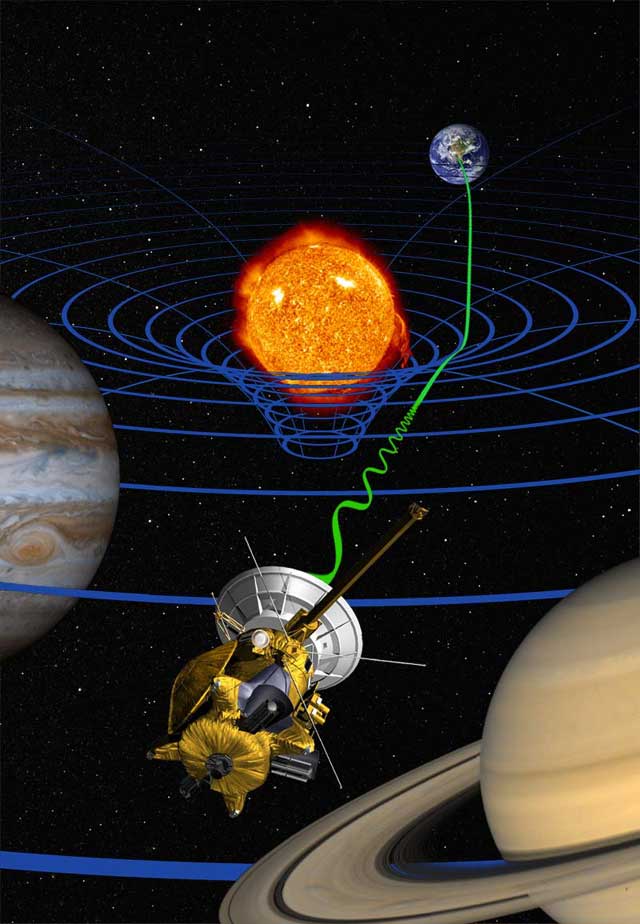 |
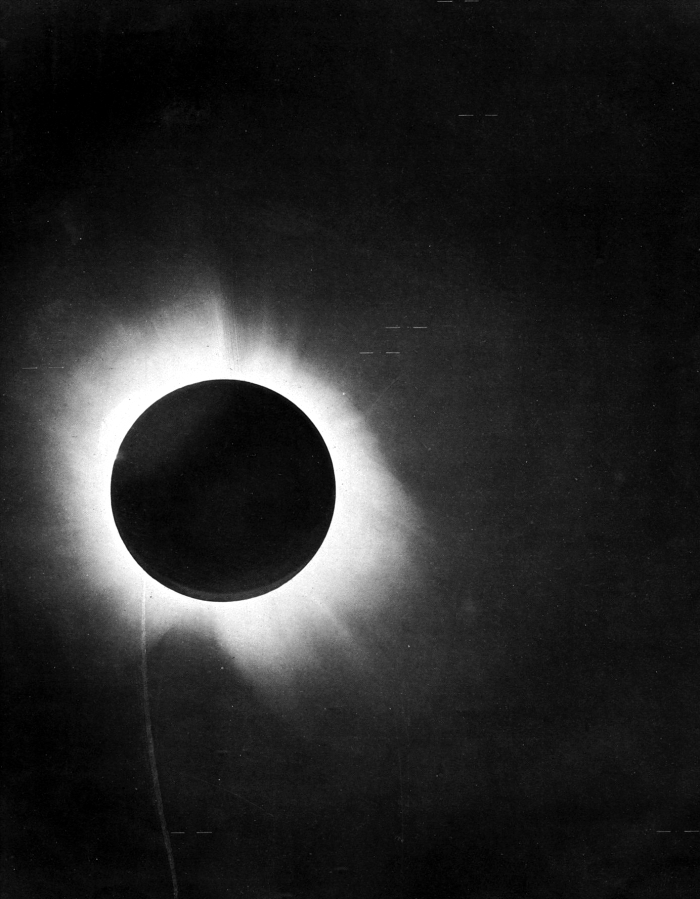 |
|---|---|
General relativity bends light by twice the amount predicted by Newtonian mechanics.
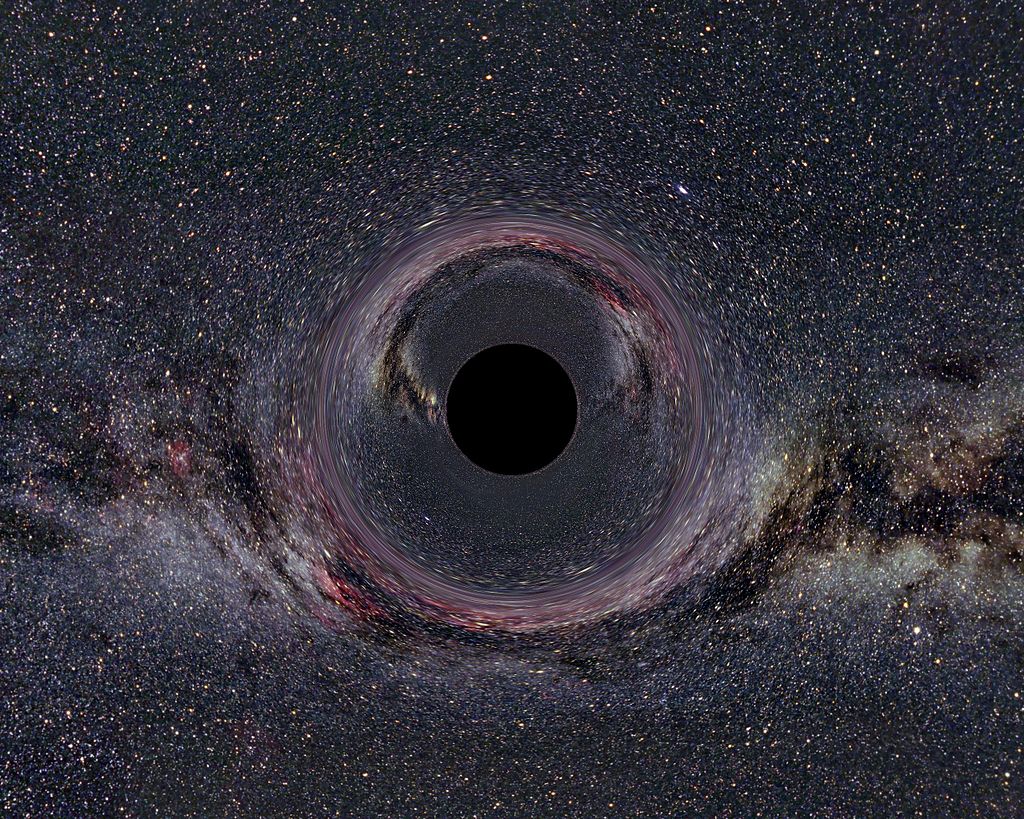 |
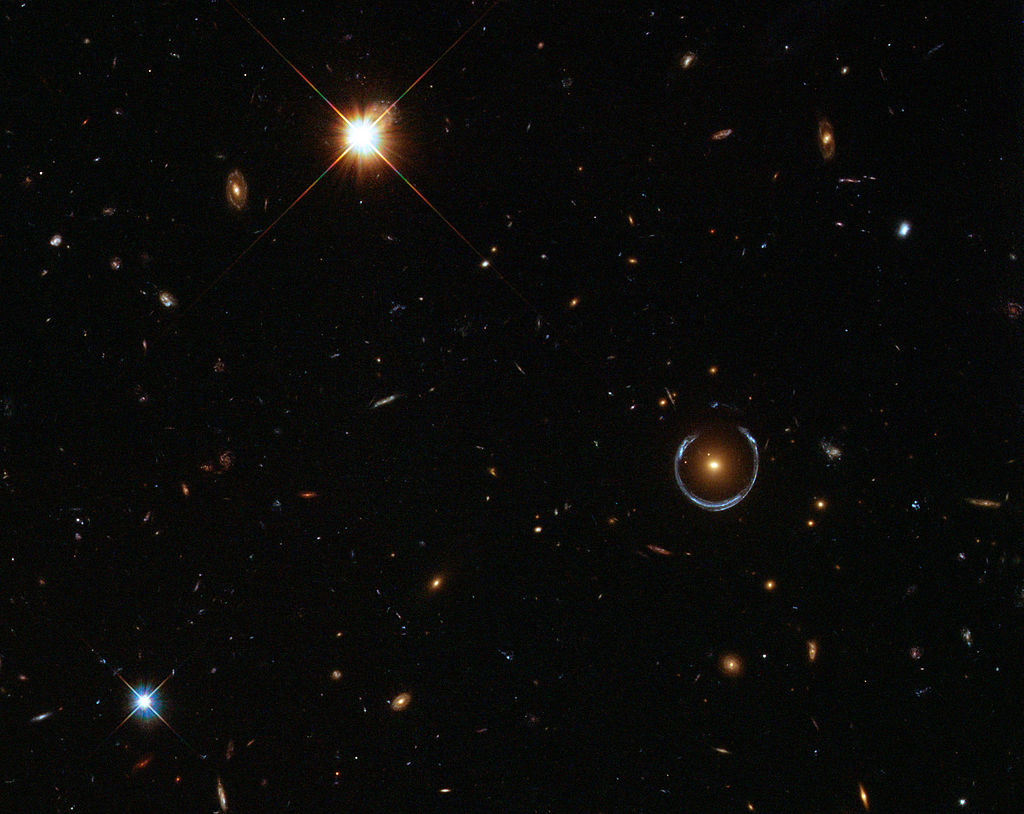 |
|---|---|
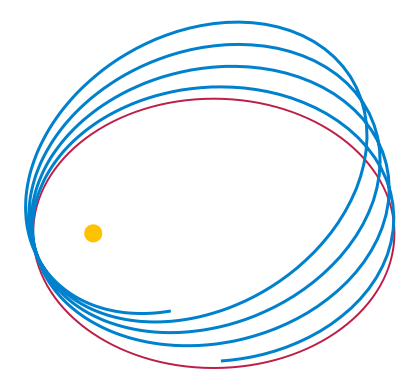 |
|---|
In Newtonian gravity, if 2 gravitatating objects are ideal point masses then the orbits don't precesss, and in general relativity they do. In 1859 Mercury's orbit was found to precess, and the precession was found to be in accord with general relativity.
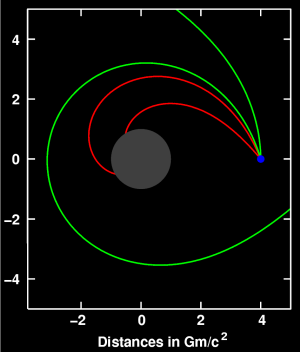 |
|---|
A photon launched tangental to a black hole will orbit as a circle if it is at 3/2 times the event horizon radius. If it is closer it will spiral in and if it is further it will escape.
The circular orbit is unstable. If the photon deviates from the circle it will either fall into the hole or escape.
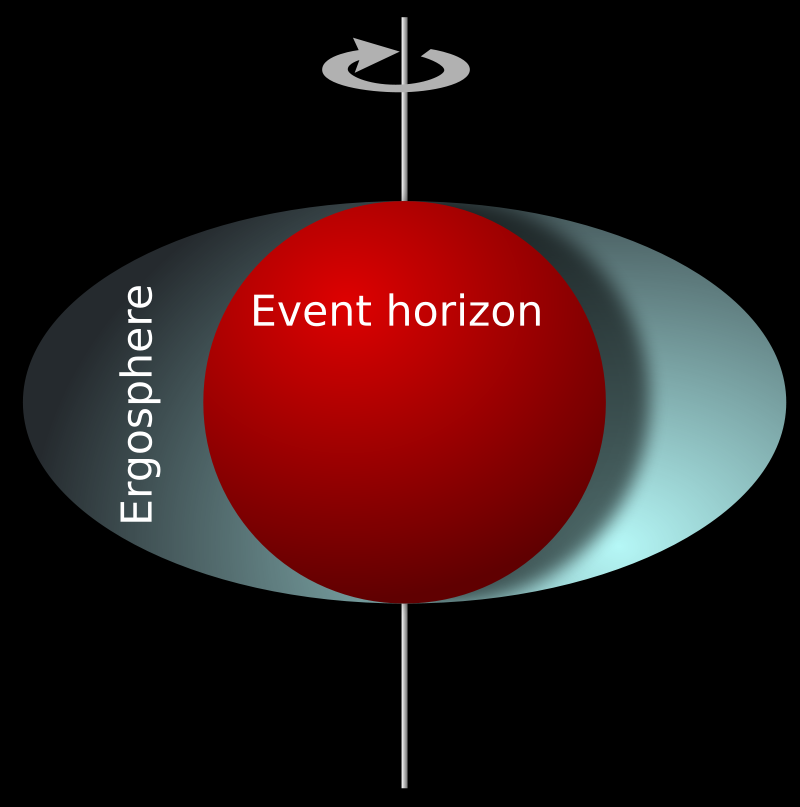 |
|---|
A spinning black hole drags the space around it. Photons orbiting the hole in the direction of the spin appear to move faster than photons orbiting counter to the spin.
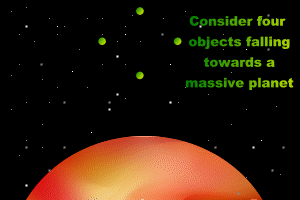 |
 |
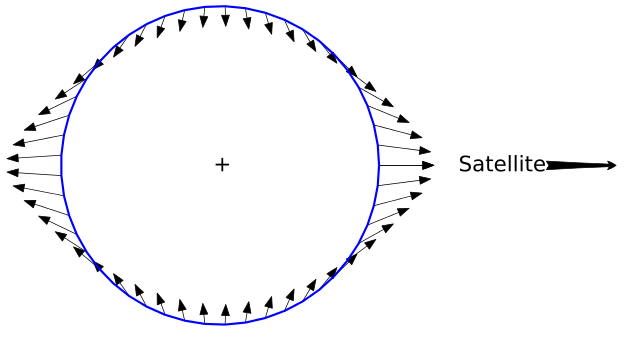 |
|---|---|---|
Objects near a black hole experience extreme tidal forces.
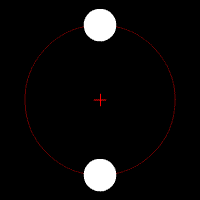 |
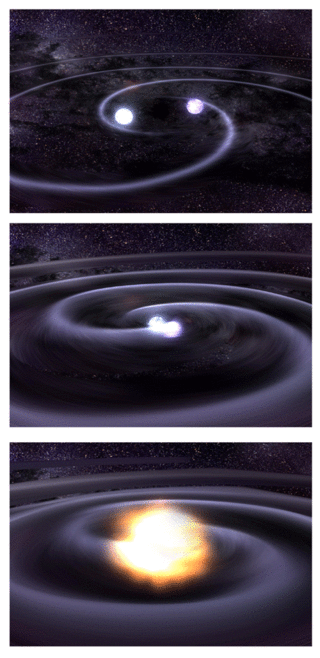 |
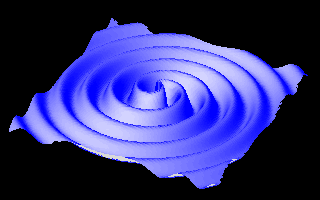 |
|---|---|---|
Two orbiting objects emit gravitational waves. If the objects are large enough the will lose energy, inspiral, and merge.
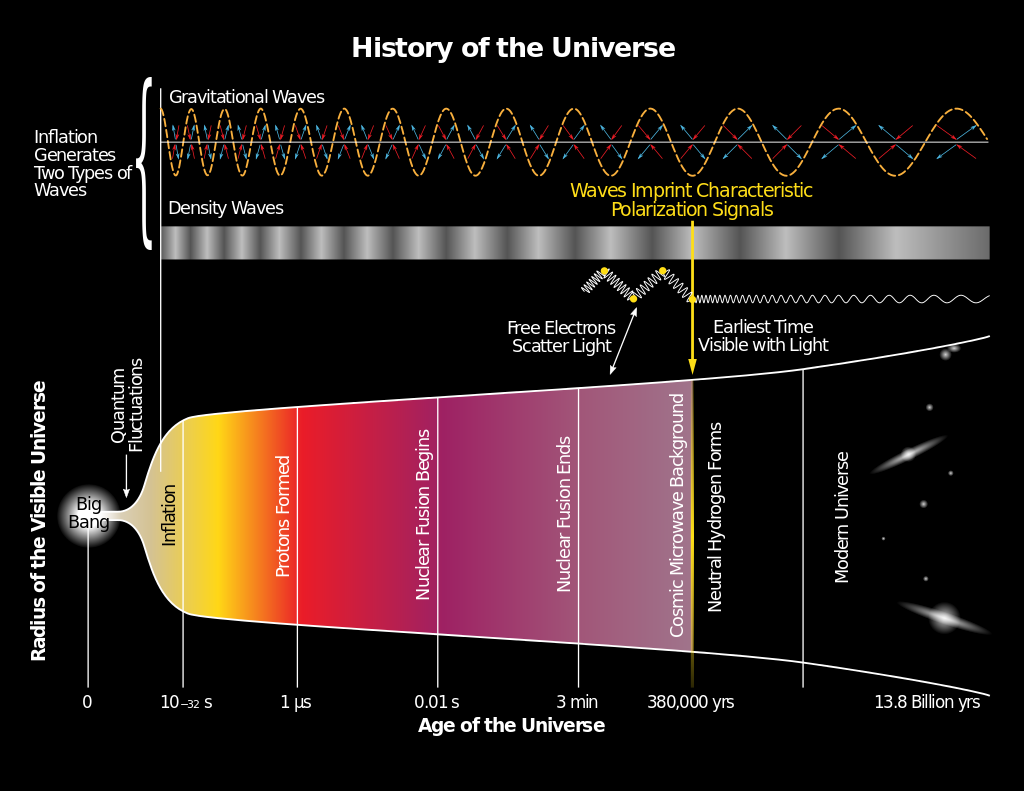 |
|---|
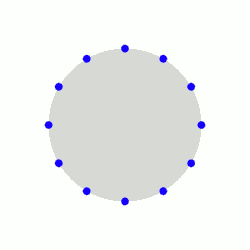 |
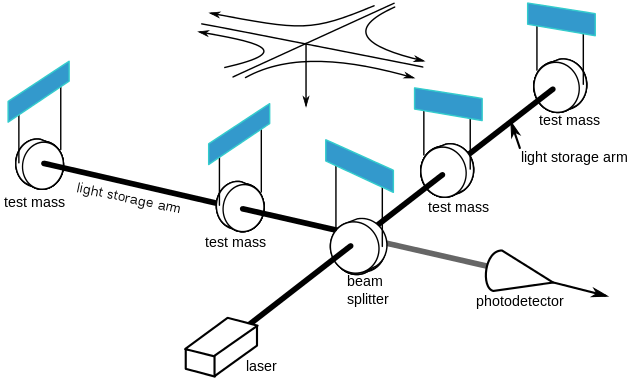 |
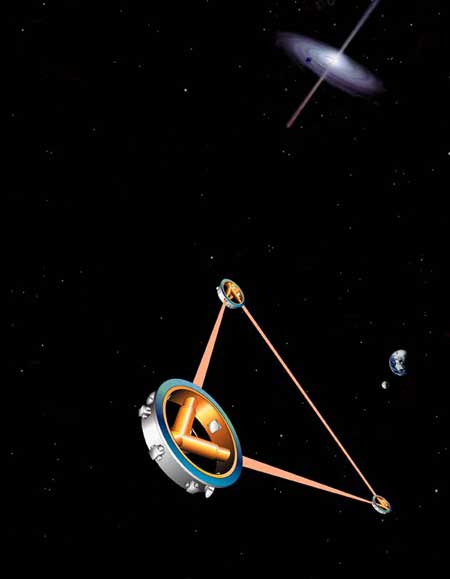 |
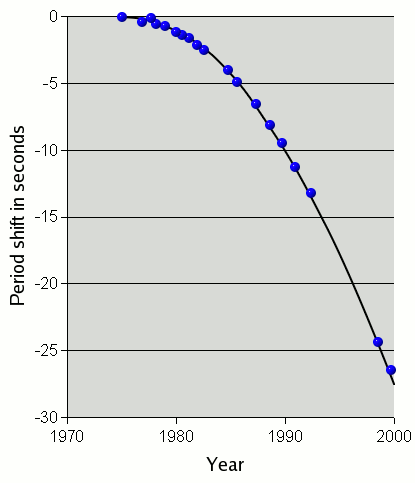 |
|---|---|---|---|
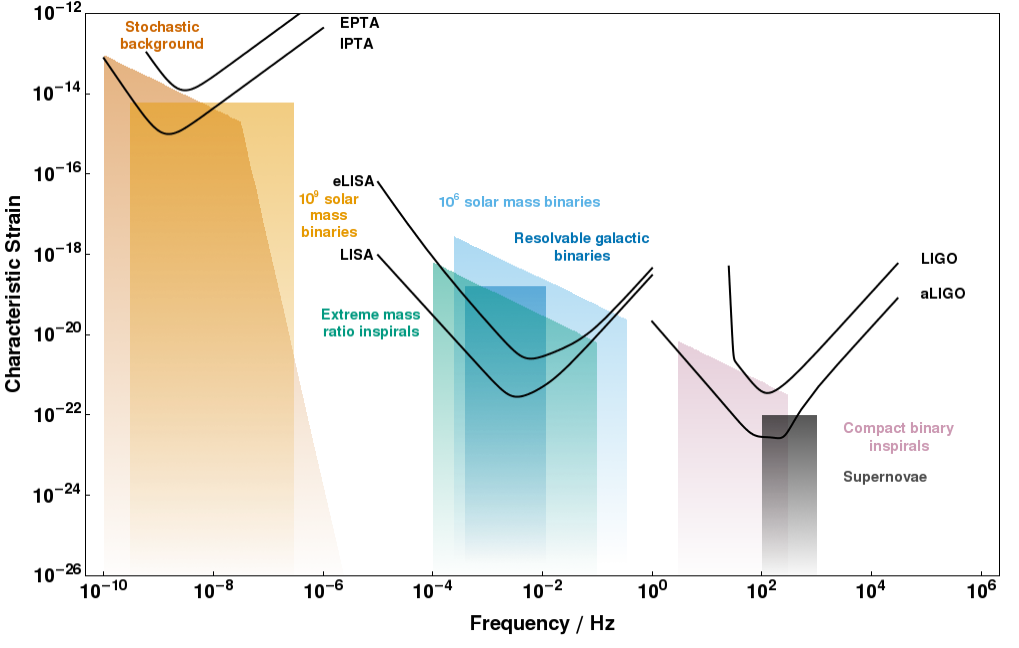 |
|---|
 |
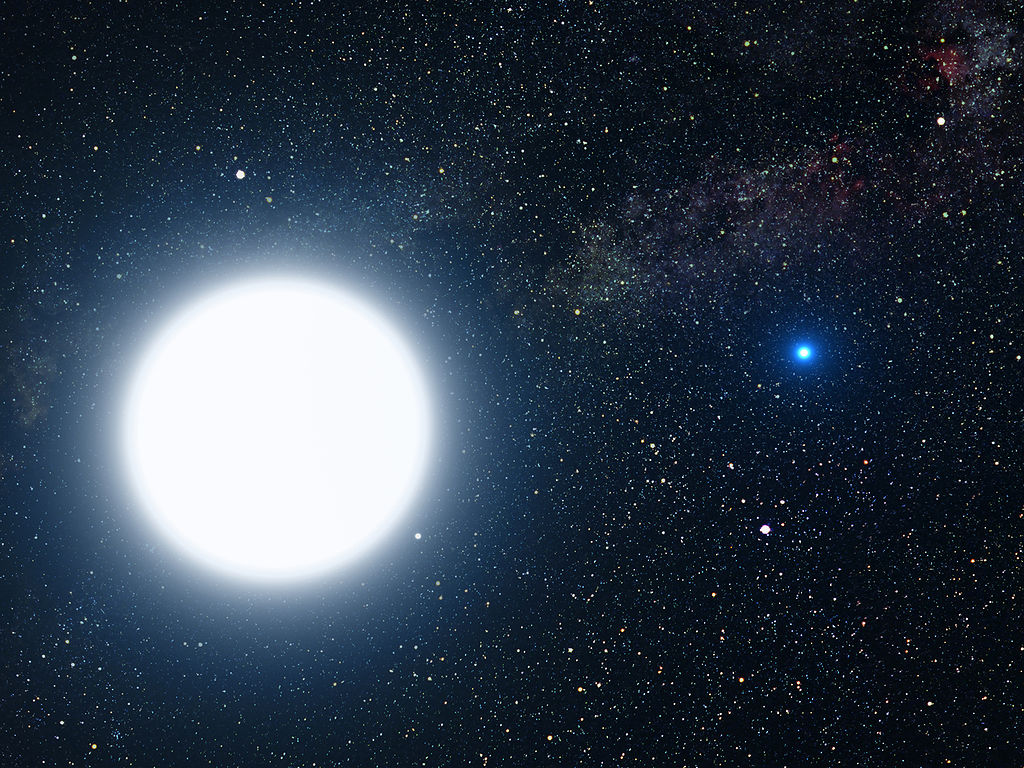 |
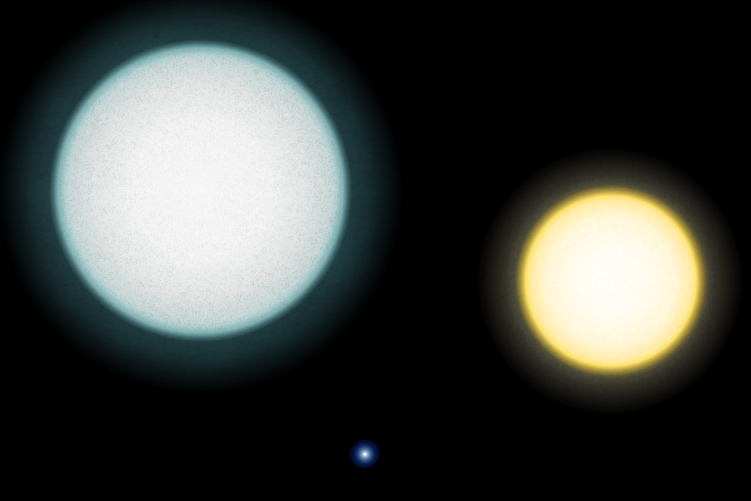 |
|---|---|---|
Sirius B and Pegasi B are white dwarfs and they appear as the small blue dots in the images.
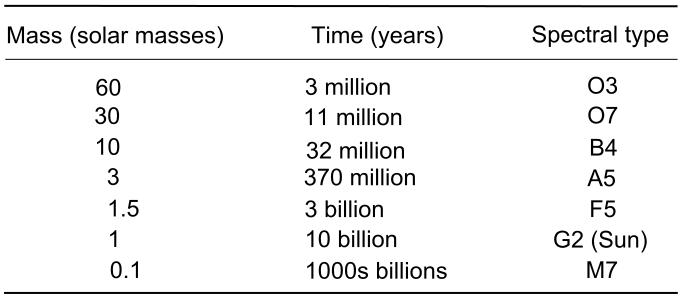 |
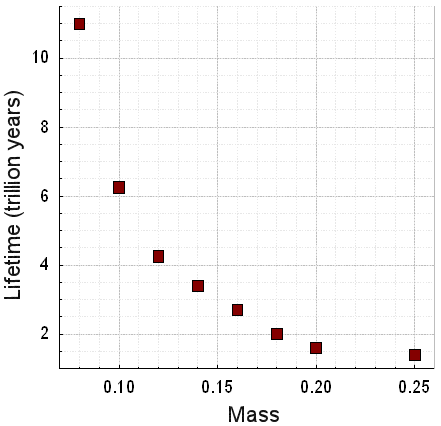 |
|---|---|
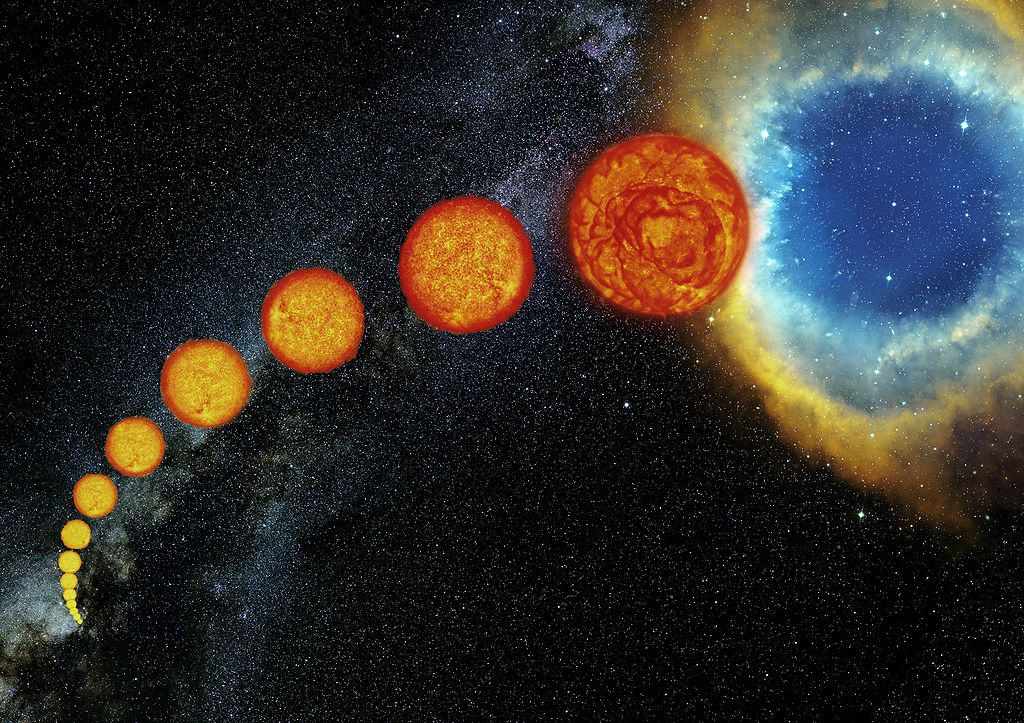 |
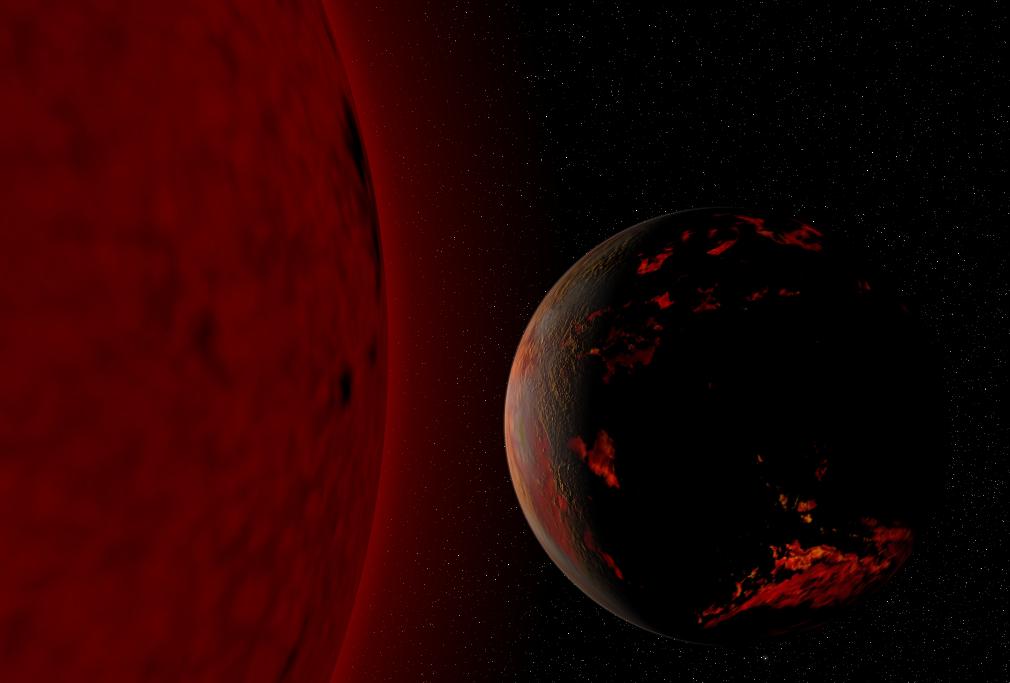 |
|---|---|
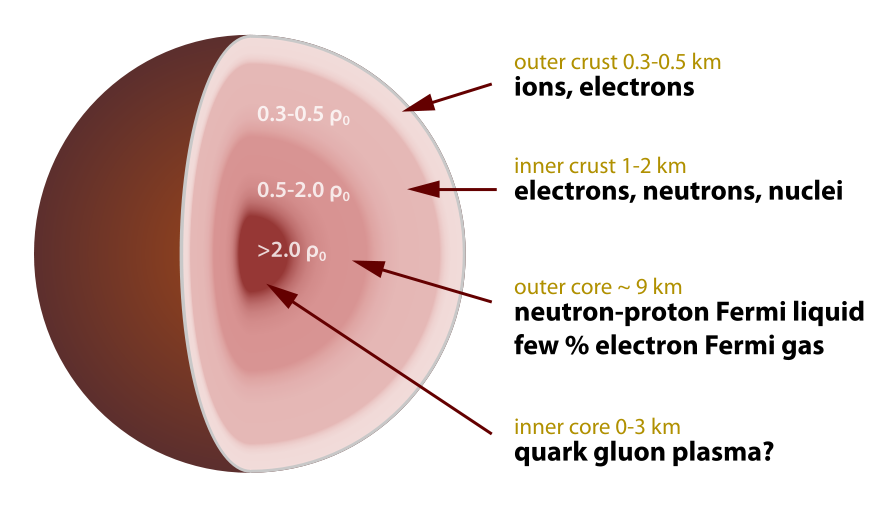 |
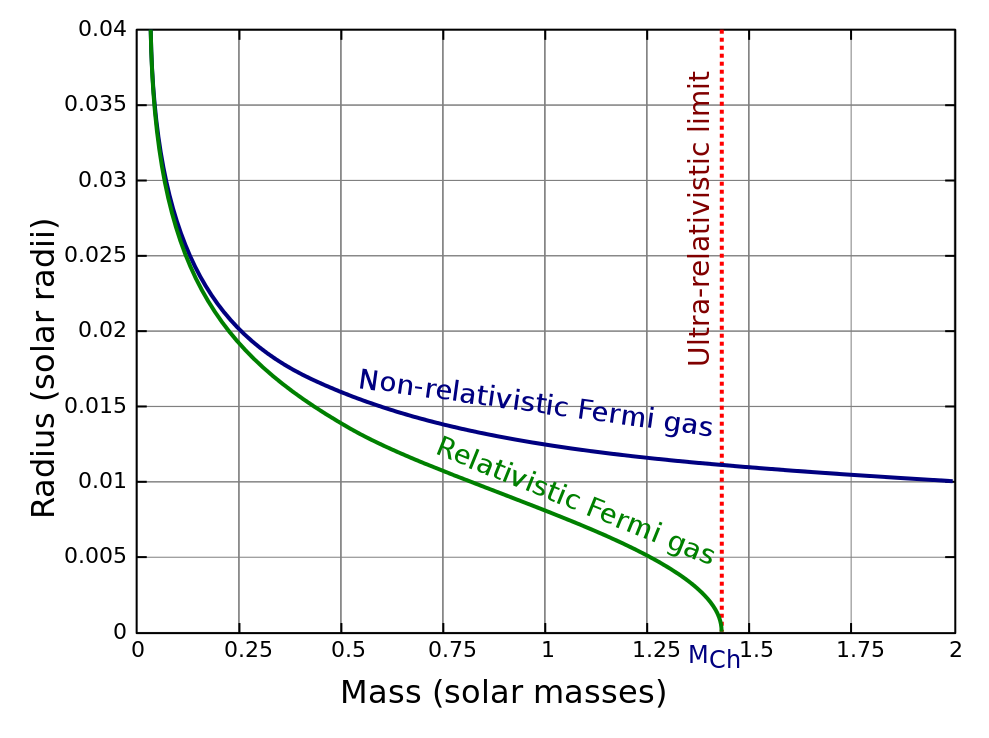 |
|---|---|
Mass Radius Schwarzschild Surface grav Surface tide Escape Core Core temp
(Sun=1) (km) radius (km) (m/s^2) (m/s^2/m) speed density (MKelvin)
(C=1) (g/cm^3)
Sun 1 696000 3.0 279.4 .00000039 .0021 150 15
Red dwarf .08 70000 .24 2170 .00000031 .0018 100 13
Jupiter .00096 69900 .0028 24.8 .00000037 .00020 25 .036
Earth .000003 6371 .000009 9.8 .0000015 .000037 12 .006
White dwarf max 1.4 3500 4 15000000 4.3 .034 e8 10
Neutron star max 3 13 9 2.4e12 180000000 .82 8e14 1
Black hole min 3 9 9 4.9e13 550000000 1 2e15 -
Milky Way BH 4200000 - 12400000 3600000 .00029 1 1050 -
Andromeda BH 200000000 - 5.9e8 76000 .00000013 1 .46 -
APM-08279 BH 23000000000 - 6.8e10 660 9.7e-12 1 .00003 -
Gravity constant = 6.67e-11 N m^2 / kg^2
Sun mass = 1.989e30 kg
Schwarzschild radius = 2 G M / C^2
Sun Schwarzschild radius = 2.95 km
Iron nucleus density = 2.3e14 g/cm^3
Neutron star core pressure= 1.6e35 Pascals
The tidal magnitude is the change in gravitational acceleration per distance from the
gravitating object.
Tidal magnitude Effect on a human
(m/s^2/m)
.1 Minimum perceptible
1 Tangibly perceptible
10 Uncomfortable
50 Threshold for blackout, where the heart cannot pump blood to the brain
If you are standing on the surface of a white dwarf then the tidal magnitude is
tangible but not uncomfortable. The gravity, however, is enough to squash you.
The larger the mass of a black hole, the smaller the tidal magnitude at the Schwarzschild radius. The tidal magnitude is imperceptible at the surface of the Milky Way supermassive black hole.
The largest known black hole is AMP-08279.
For the above calculations we have assumed Newtonian physics, which is okay if the escape speed is substantially less than the speed of light. This applies for stars, planets, and white dwarfs, but not for neutron stars and black holes. For these objects you need general relativity and the Newtonian numbers should be regarded as approximate.
All neutron stars have extreme magnetic fields, and the ones with the most extreme fields are called magnetars. Magnetars have a field of between 10^8 and 10^11 Tesla. A neodymium magnet has a field of 1.25 tesla and a magnetic energy density of 4.0e5 J/m3. A magnetar's 10^10 tesla field, by contrast, has an energy density of 4.0e25 J/m3. The magnetic field of a magnetar is lethal at a distance of 1000 km due to the strong magnetic field distorting the electron clouds of the subject's constituent atoms, rendering the chemistry of life impossible. At a distance halfway to the moon, a magnetar could strip information from the magnetic stripes of all credit cards on Earth. As of 2010, they are the most magnetic objects ever detected in the universe.
As described in the February 2003 Scientific American cover story, remarkable things happen within a magnetic field of magnetar strength. "X-ray photons readily split in two or merge together. The vacuum itself is polarized, becoming strongly birefringent, like a calcite crystal. Atoms are deformed into long cylinders thinner than the quantum-relativistic de Broglie wavelength of an electron." In a field of about 10^5 teslas atomic orbitals deform into rod shapes. At 10^10 teslas a hydrogen atom becomes a spindle 200 times narrower than its normal diameter.
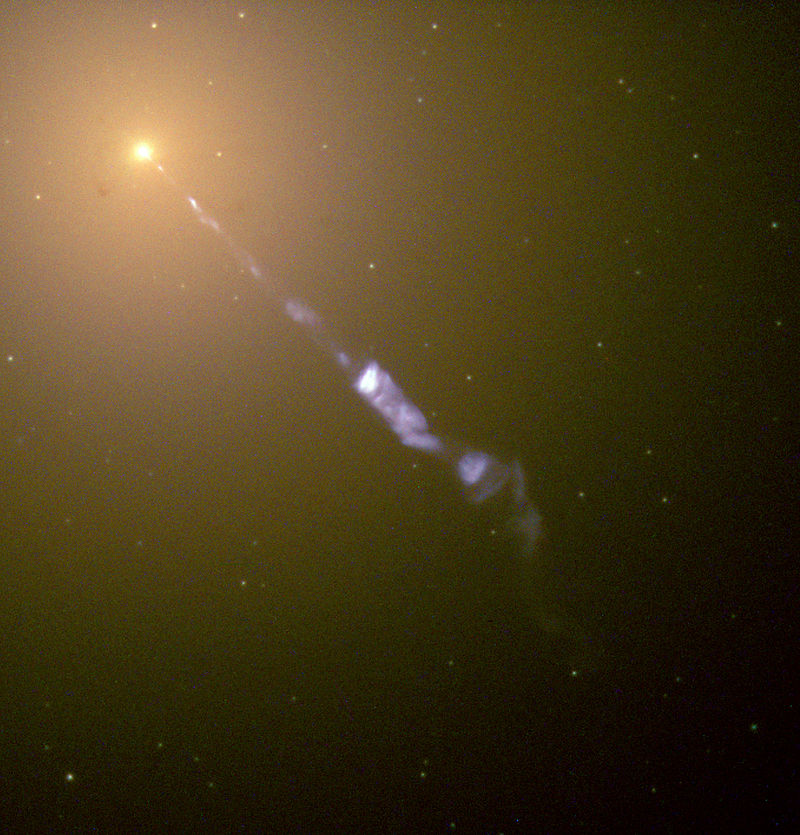 |
|---|
Matter falling into a black hole forms an accretion disk. The disk generates a magnetic field and the field ejects material from the disk in a jet. Most of the material falls into the hole and some is ejected in the jet.